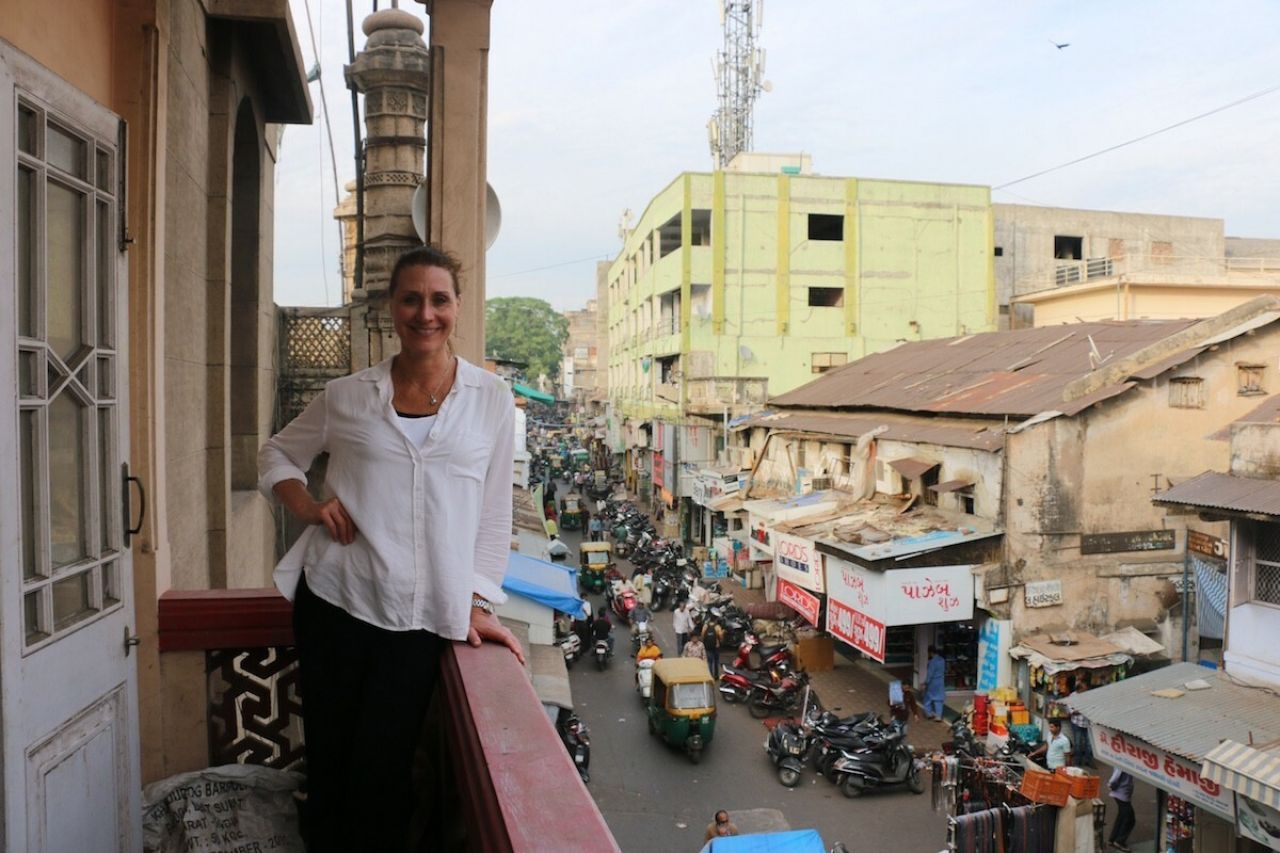October 01, 2019
The Risks and Rewards of Art History: Janet Purdy's Immersive Experiences in Africa

The Risks and Rewards of Art History: Janet Purdy’s Immersive Experiences in Africa
When Art History doctoral candidate Janet Purdy left a lucrative career as a designer in Chicago to attend graduate school and pursue a career researching African art, she knew that she was taking a chance. What she had not anticipated was that while packing for the move, she would uncover old sketchbooks from her undergraduate days filled with drawings of African textiles and patterns that would prove she was making the right decision.
“I had completely forgotten about them, but I was always fascinated with design and how cultures communicated through patterns and iconography,” noted Purdy. “Finding those drawings at that moment was a really special ‘close the circle’ moment.”
Similarly, Purdy’s dissertation research focuses on the patterns of carved wooden doors as a form of historical documentation and conveyor of ideology and identity. By investigating their sociopolitical contexts throughout the Swahili Coast, she aims to reveal the doors’ meanings within their cultures and preserve their role in communication and narrative. Purdy’s project is part research, archaeology, and digital mapping/reproduction, making stylistic and symbolic connections across Indian Ocean trade routes. She is a student of Bill Dewey, associate professor of art history in Penn State's College of Arts and Architecture and director of the African Studies Program in the College of the Liberal Arts (Dewey is also part of a curatorial team that received a $250,000 National Endowment for the Humanities (NEH) grant for a UCLA Fowler Museum exhibition on African blacksmithing).
“I couldn’t ask for a better advisor. I also have a rock-star dissertation committee [Madhuri Desai, Amara Solari, and Christopher Tounsel] that keeps encouraging me to shoot higher. The [Art History] department provides the perfect mix – a collegial environment, a traditional program, and the opportunity to take a more creative approach.”
Since coming to Penn State, Purdy has presented at numerous conferences and received travel grants, graduate assistantships, an internship at the Palmer Museum of Art, and a Humanities Fellowship in the College of the Liberal Arts. She was also awarded a Critical Language Scholarship by the State Department to study Swahili in Tanzania for two months during summer 2017. She was one of twenty-three American students who participated in this intensive language and cultural immersion program, the first year that Swahili was included on the list of languages understudied by American students and government.
The greatest difficulty of the language immersion program was refraining from speaking English most of the time in order to better learn Swahili. “It was a tremendous experience with a diverse group of students,” Purdy noted. “Everyone was so grateful that we were investing in their language and culture that they wanted to help me and teach me – taxi drivers, street merchants, hotel clerks ­– they all wanted to be my teacher.”
The students lived with families and attended language classes during the day. Purdy spent time in the evenings talking with her host family about the news and things that are important to them. In turn, Purdy shared her own experiences, answered questions about her life in America, and helped them to understand “that our lives are not just what they see on TV.”  
Her most recent research trips have been to the Swahili coast in the fall and India and Dubai over winter break. Much of Purdy’s research requires her to be on site, due to the limited availability of non-colonial written historical sources.
“I spend a lot of my focus on building connections with families and artists who then connect me to people with the information I am trying to find. The archives and museums have been really supportive as well, but it is a process that requires in-person visits and investing time to create relationships and earn trust,” she explained.
Purdy tends to immerse herself wherever she is, including State College. A former athlete and avid sports fan, she enjoys attending Penn State football games and tailgates, watching hockey games, and hiking Mount Nittany. She admits that Penn State has exceeded every expectation and that she has no regrets about following her dreams. Her goal is to someday teach at the college level. She also plans to continue traveling and photographing the world. Her photographs from Africa were recently featured in Penn State Research magazine and on the cover of the publication of the Interinstitutional Center for Indigenous Knowledge at Penn State. Leading by example, Purdy hopes to mentor students interested in other cultures and histories and to encourage others to pursue their passions. 
“I am happier than I ever imagined being, and I am so grateful for these opportunities that I want to help other people find that feeling,” said Purdy. “That’s why I want to teach.”
To view some of Janet Purdy’s photographs from her research trips, visit the College’s photo gallery: https://artsandarchitecture.psu.edu/gallery/janet-purdy%E2%80%99s-immersive-experiences-africa